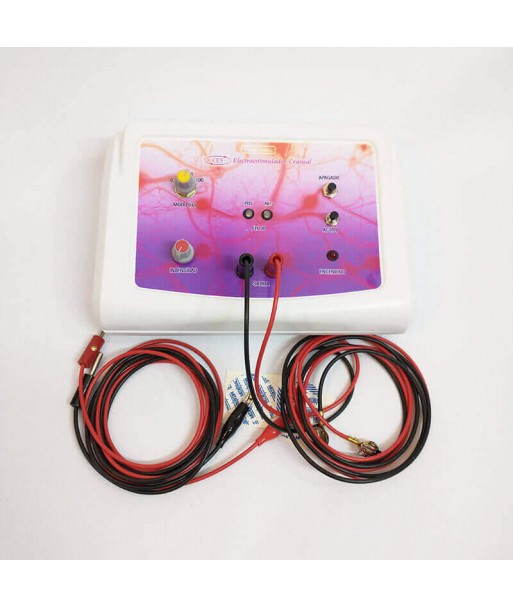

Cranial Electrostimulator (CES)
Special for depression, anxiety, insomnia and fibromyalgia. (Check stock)
 Shipping Policy
Shipping Policy
Your peace of mind is our insurance to continue evolving together.
The cranial electrical stimulation (CES), is a technology approved by the FDA for the treatment of anxiety, insomnia and depression, consisting of the passage of small electrical currents through the patient's skull for medical treatment. In 1914, Robinovitch made the first attempt to induce sleep using electrical signals. Further studies in the 1960s found that CES was a reliable method for reducing anxiety and improving cognition in people recovering from addictions.
With this equipment it is possible to treat chronic anxiety disorder, insomnia, depression or a combination of the latter, control chronic, acute or post-operative pain, migraines, fibromyalgia, Attention Deficit Hyperactivity Syndrome ( ADHD), fears and phobias, addictions in general, etc. Chronic stress causes an imbalance of neurotransmitters such as serotonin, dopamine, norepinephrine and endorphins. CES teams tend to balance these neurotransmitters, bringing the person back to normal.
CES increases the production of neurotransmitters that are necessary for information processing, memory, energy levels and physical well-being. When our neurotransmitters and endorphins are not produced at the necessary levels , can lead to destructive behaviors and/or substance abuse as substitutes for those deficiencies. Stimulation with these beneficial signals is done through electrodes placed on the earlobes. Bioelectronic's CES equipment offers the possibility of working not only with said electrodes, but also brings clips for self-adhesive electrodes for stimulation through the scalp. Many professionals choose this type of stimulation for different pathologies.
In addition, our CES equipment has 4 stimulation modalities with different frequencies: 0.5; one; 50 and 100 Hz. The regulation of the intensity of the equipment allows adjusting the currents between 0.03 and 0.5 mA. This variety of combinations allows covering more pathologies, since it has been proven that very low currents in the order of microamperes (called micro-TENS) together with frequencies between 0.5 and 3 Hz, are more effective for treatment. of pain, and in the generation of endorphins.
It is traditional to hear that synaptic activity, that is, the communication that occurs between neurons, is a chemical function, but the most recent research on the subject ensures that only 2% of this synaptic activity is carried out by the chemical way, being the majority of them a physical/atomic electromagnetic communication. The proximity between the neurons favors specific bioelectrical signals with frequencies that perfectly match the resonance frequencies of the receptor and amplify changes in molecular conformation. (Benveniste, J. A fundamental basis for the effects of EMFs in biology and medicine: The interface between matter and function. Chapter 13 in Bioelectromagnetic Medicine. Rosch, P and Markov, M, eds. Marcel Dekker, New York, 2004.)
Effects produced by CES stimulation are relaxation, alertness, calmness, non-worry state, increased energy, improved night-time rest, improved levels of confusion, memory loss or disorientation, balance of the sympathetic/parasympathetic system. These effects are achieved through the stimulation of the corresponding hormonal generation and the suppression of thalamo-cortical activity, inducing the brain to an alpha wave rhythm. Serotonin, as a neurotransmitter, can also modulate the sensation of pain in the spinal cord and alter the perception of pain, producing analgesia.
Bioelectronic's CES equipment, for safety reasons, works with rechargeable batteries, so it is not connected to the home electricity network. It is only connected to the battery charger, when the charge level of the batteries requires it.
Bioelectronic's CES team tends to reduce or eliminate the intake of specific medications that normally have many adverse effects. It also has no contraindications for use in medicated people, but rather, it can enhance its effects in many cases.

